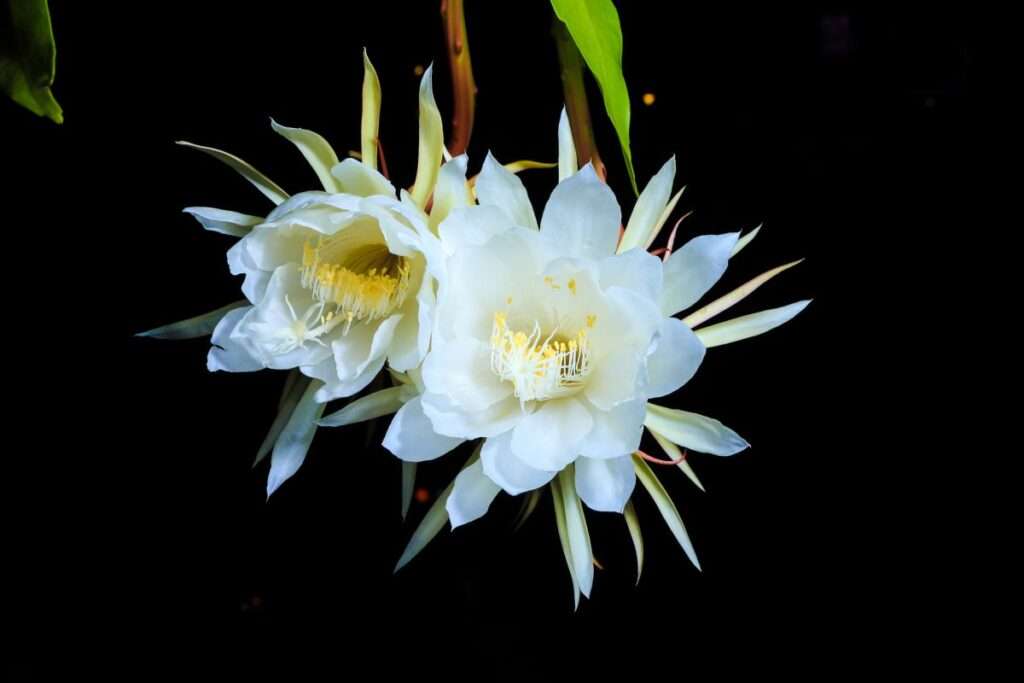
It is a rapidly expanding plant in the wild. A kind of forest cactus that can be found in portions of South America, Central America, and Mexico. It doesn’t have leaves; the leaves you see on the plant are actually modified stems that can store water when the environment is drier.
This nocturnal flowering species is adorned with white, beautifully scented, spherical blooms with slender petals. Growth is long and flat, with modified stems acting as spineless branches. These droop and become pendulous, making them ideal for hanging pots. Large, fragrant, white flowers are in bloom.
Care
Special attention is required for this kind of succulent plant. Despite being a cactus, it thrives on the treetops in tropical jungles.

Light Requirements
While most cacti like full daylight, the Queen of the Night prefers brilliant indirect lighting because sunlight from thick plants is blocked in its native habitat. The greatest kind of light for your queen of the night cactus flower to blossom is indirect sunlight. When a surface scatters sunlight, indirect light is produced. A transparent shade covering a window or tree leaves can be used to diffuse sunlight. Three feet should separate your plant from a window that receives direct or diffused sunlight.
Soil Type
The Queen of the Night flower needs light, airy soil that drains easily because it thrives in the canopy of the jungle. To add fluff and air to potting soil, add Perlite, sand, peat moss, or bark. The Queen of the Night grows nicely when its roots are confined, thus a large pot is not necessary. To climb up trees, the cactus shoots out long aerial roots. Trellis, chicken wire, or ropes can support the plant’s tendency to climb by acting as supports.
Water Schedule
The Queen of the Night doesn’t need a lot of water because it is a cactus. It can store water in its juicy stems, thus it shouldn’t be watered excessively because this might cause root rot.
Wait till the plant is completely dry before watering it. From the spring through the Fall, you can water your Queen of the Night once every two weeks. During the winter, water your cactus once every four to six weeks.
Optimal Temperature
Your Queen of the Night will remain healthy by simulating the humidity and temperature of the jungle. Never allow the plant to be exposed to cold conditions; instead, maintain temperatures between 50 °F and 90 °F. The plant will quickly perish if temperatures dip below freezing. If your Night Queen is harmed by cold, cut all dead foliage down to live stems.
Humidity Levels
Use a humidifier or spritz the plant to keep the humidity level over 50%. In addition to the twice-weekly waterings, spray the plant once a week if you reside in a dry area.
Fertilizer
Feed your Queen of the Night once a month from the spring through the autumn using a succulent plant food. Pick a fertilizer with little nitrogen. The cactus will expand too much and not produce many flowers if your fertilizer contains too much nitrogen.
Additionally, you can give organic compost to your Queen of the Night. The cactus is very good at breaking down organic stuff since it feeds on decaying leaves, insects, and bird droppings in the trees.
Table





